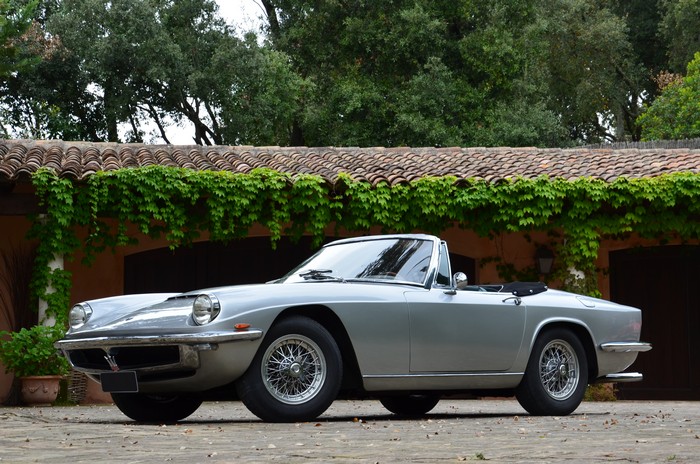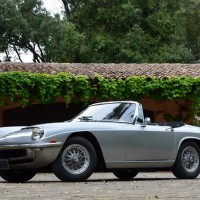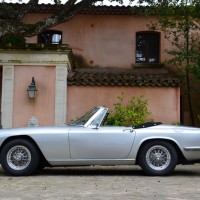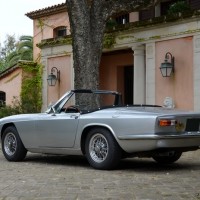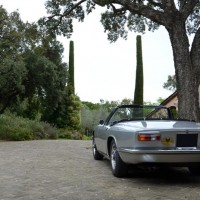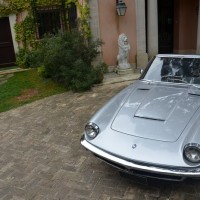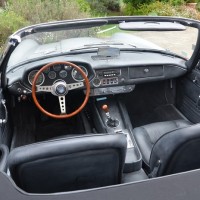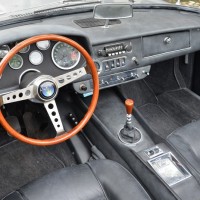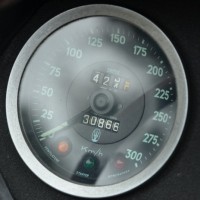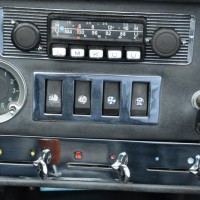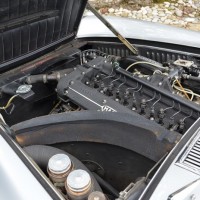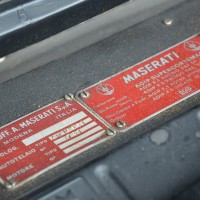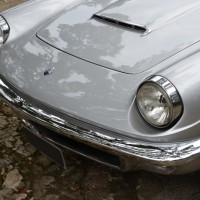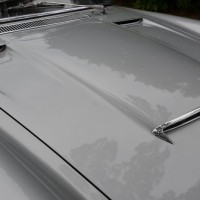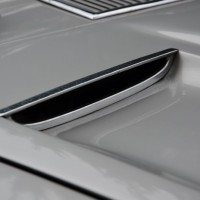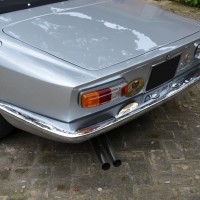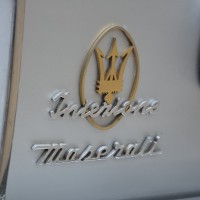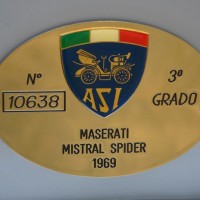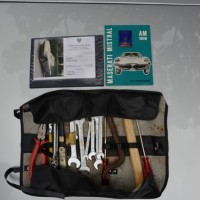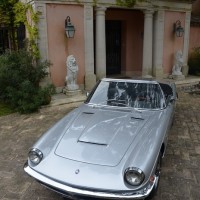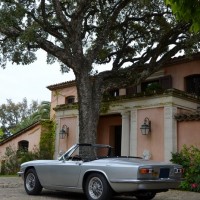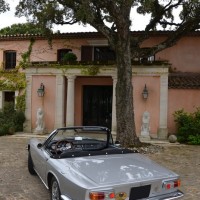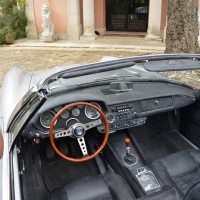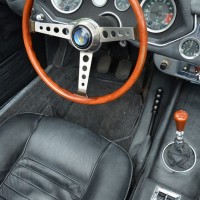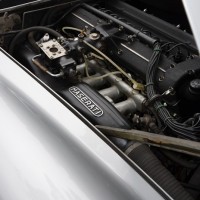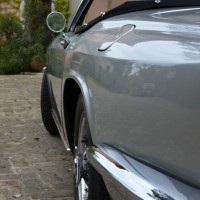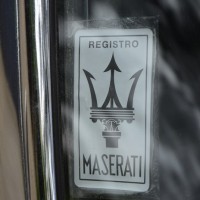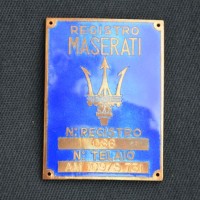At the start of the 1950s, Maserati was still producing cars on a small scale. It built high-performance sports cars that were a little too demanding for the wealthy clientèle just starting to appear after the war.
The marque wanted to produce models that kept the same allure and were fast, but which had improved levels of comfort and security. The task of developing such a car was given to Giulio Alfieri, the brilliant engineer who joined Maserati in 1953. Four years later, the Maserati stand at the Geneva Motor Show displayed a stunning prototype of the 3500 GT, with a coupe body designed by Touring. It formed the base for the formidable line of GT cars that followed. With a 6-cylinder, twin-spark engine derived from competition, the 3500 GT could reach speeds of more than 200 km/h (124 mph) with ease, allowing it to dominate the fast lane on unrestricted highways.
The car was a success, and more than 2,000 examples were built on different bodies. In 1963, Maserati unveiled the car that would unequivocally replace the 3500 GT. It was the Mistral, elegantly designed by Frua. It was available in 3.7- and 4-liter versions, with the 3.7-liter engine producing 245 horsepower and enough power to propel the car to 230 km/h (142 mph). This car was delivered new on February 12, 1969, in Italy to Nami Hamouda. In 1978, it is believed to have passed into the hands of Farag Owar Bessituni on behalf of the king of Morocco, before returning to the Maserati factory collection in 1997. It was then acquired by an engineer from Modena who carried out a complete and thorough restoration of the car, in line with the original configuration.
In July 2004, this stunning Mistral was featured on the cover of Ruoteclassiche. The car sold to the current owner at an auction in Gstaad, Switzerland, in December 2007. At that time, it had covered just 27,000 km (16,777 miles) from new, and six years later, on the day the photographs were taken, the odometer read 30,866 km (19,179 miles). In 2008, it won the Concours d’Elegance de Valescure. The original black leather upholstery displays a charming patina, and the carpets are also in excellent, original condition. The car comes with a copy of the original bill of sale from 1969, original toolkit, owner’s manual and various documents including its ASI certificate.
SCM Analysis
Detailing
| Vehicle: | 1969 Maserati Mistral Spyder |
| Years Produced: | 1963-69 |
| Number Produced: | 123 (Spyders) |
| Original List Price: | $13,600 |
| SCM Valuation: | $125,000-$225,000 |
| Tune Up Cost: | $1,950 |
| Chassis Number Location: | Engine compartment on firewall |
| Engine Number Location: | Stamped on side of block |
| Club Info: | Maserati Club International |
| Website: | http://www.maseratinet.com |
This car, Lot 242, sold for $368,756, including buyer’s premium, at the Artcurial Automobiles sur le Champs 5 sale in Paris, France, on June 10, 2013.
The transformation of Maserati into a serious — and full-time — builder of luxurious grand tourers was truly complete by the time the Mistral appeared in 1963. Carrozzeria Frua had also become a new supplier of choice, with the trailblazing Quattroporte’s design coming from that studio, although it was built by Vignale.
The basic style architecture was a development of themes that were seen in the Frua-bodied 5000 GT built for the Aga Khan. The style expressed a unique viewpoint, with soft angles and smooth panels combining to reflect light in a stunning manner. In the 1960s, Maserati was still comfortably close to its competition days of glory, so that the sight of those black crackle-finish cam covers and 12 sparkplug wires brought immediate images of Le Mans, Spa, Monza and the Targa Florio.
There was a slightly bewildering model assortment at Maserati in the 1960s, with cars coming and going with rather casual overlapping production. The 3500 GTi coupe gave way in 1964 to the Sebring, which had been launched in 1962, and the Mistral followed in great haste. At one point, it was theoretically possible to have your choice of a 3,500-cc Maserati in three distinct bodies. It was simpler when it came to open cars, with the Vignale-designed 3500 Spyder being succeeded by the Frua-designed Mistral Spyder.
Maserati’s time at last?
We — and “we” know who “we” are — have been patiently awaiting the Age of Maserati. The prices of “the English Maserati” — otherwise known as Aston Martin — continue to soar into the stratosphere, even though they have six fewer cylinders and two more back seats than most of their comparable Ferraris. This situation has been incredibly frustrating for devotees of the marque of the trident.
While Maserati handily outsold Ferrari, Lamborghini and Aston Martin in the 1960s, by the time their cars of the decade became collectors’ items, the sheer number of Maseratis available did nothing to help support prices. In addition, the Lucas fuel injection fitted to the 3,500-cc, 3,700-cc and 4,000-cc engines won few friends for reliability and repair friendliness when the era’s typically short warranty expired. Many were unceremoniously ripped out and replaced with Weber carburetors, which were easier to deal with — but nonetheless changed the character of the power delivery.
The high-water mark for the Mistral Spyder in the SCM Platinum Auction Database is the $369,695 realized for a 1966 4-liter car at Bonhams’ Monaco sale in the hot market of May 2008. That car, which I profiled in SCM (August 2008, p. 52), was described as and appeared to be a very fine, correctly and expensively restored example, with the largest engine.
Since that sale, through the vicissitudes of the market of the past four years there have been a pair of sales at $200k in 2009 and 2010, indicating that any decline was relatively minimal, as neither of those cars was reported to be at the level of the Bonhams 2008 car.
Now, we have another — our subject car — that was described as being an excellent, low-mileage, well-restored car which carries the Automotoclub Storico Italiano (ASI) “Targa d’Oro,” indicating the FIVA associates’ highest rating for a preserved or correctly restored vehicle. The interior, which is stated to be original, looked to be nicely broken in and the paint and bright trim appeared to have a good, even, consistent look. It was also still fitted with the Lucas injection, which today can be properly rebuilt and maintained to provide the precise experience intended by Maserati’s engineers.
Well, not yet…
This car was sold to the consignor at the Bonhams Gstaad sale in December 2007 (SCM Platinum #48094) for the then-quite-substantial sum of $263,150. With presumed net proceeds of approximately $320,000, it represents a 21% appreciation in six years. That’s not tragic, but, consider this: A 1967 Aston Martin DB6 Volante sold in January 2007 for $220,000 at RM in Phoenix, AZ. In Monterey 2012, RM offered another that was a no-sale at a high bid of $781,000.
As one of fewer than 125 open Mistrals built, it is also rarer than the DB6 Volante, which is practically common, with 140 made. Any Mistral is wonderful to drive, with the seamless, bottom-to-top power delivery of the Maserati inline 6-cylinder engine. This world-class powertrain is allied to a solid body structure and entertaining handling. When the oh-so-chic “just stepped from the yacht” styling is added to the mix, it’s a sure bet that the Italian Aston is still wildly undervalued. For a low-mileage, well-documented example, this was an excellent buy. ?
(Introductory description courtesy of Artcurial Motorcars.)
